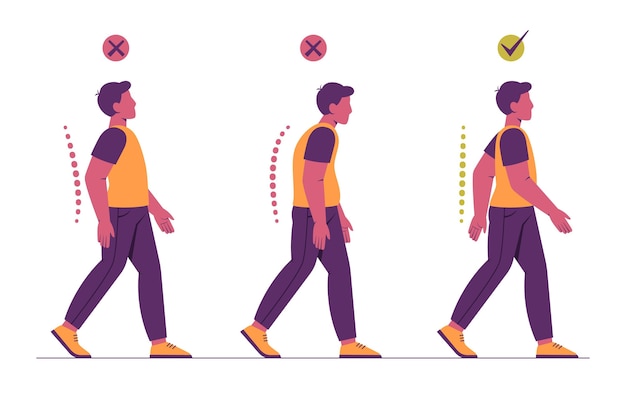Increasing your daily step count is one of the simplest ways to boost cardiovascular health, improve mood, and support weight management. But if you're living with back pain, walking can feel like a double-edged sword—beneficial in moderation, yet potentially harmful if done incorrectly.
Many people unknowingly make mistakes that not only stall their progress but also increase the risk of injury. This article uncovers eight common missteps that could be sabotaging your efforts—and offers practical, back-friendly solutions to help you move more safely and consistently.

One of the most frequent errors is drastically increasing step count overnight. While enthusiasm is great, sudden spikes in activity can overload sensitive spinal structures, especially if your back is already compromised.
Instead, adopt a gradual progression. Start with a baseline—say, 2,000 steps a day—and add no more than 10–15% per week. This slow ramp-up allows your body to adapt without triggering flare-ups.
Pain is not just discomfort—it's a warning. Continuing to walk through sharp or radiating pain can worsen inflammation or irritate nerves, especially in conditions like sciatica or spinal stenosis.
Distinguish between discomfort and danger. Mild muscle fatigue is normal; burning, shooting, or worsening pain is not. Stop and rest if pain increases during or after walking. Consider shorter, more frequent walks instead of long sessions.

Slouching, leaning forward, or overstriding alters spinal alignment and increases pressure on discs and joints. Over time, poor posture can turn a therapeutic walk into a source of strain.
Focus on maintaining a neutral spine: stand tall, engage your core lightly, keep shoulders relaxed, and take natural strides. Imagine a string gently pulling the top of your head upward.
Shoes without proper support can lead to poor biomechanics, affecting your gait and indirectly stressing your lower back. Flip-flops, worn-out sneakers, or flat-soled shoes offer little shock absorption.
Invest in supportive walking shoes with cushioning, arch support, and a stable heel. Replace them every 300–500 miles. If you have flat feet or overpronation, consider custom or over-the-counter orthotics.
Jumping straight into walking without preparing your body increases the risk of muscle strain and joint stress. Cold muscles are less elastic and more prone to injury.
Spend 5 minutes warming up with gentle movements: pelvic tilts, knee lifts, or seated marches. After walking, cool down with light stretching—focus on hamstrings, hip flexors, and lower back—to improve flexibility and reduce stiffness.
Not tracking steps makes it hard to stay consistent or recognize patterns. You might think you're active, but without data, it's easy to overestimate or lose motivation.
Use a pedometer, fitness tracker, or smartphone app to log daily steps. Set small, achievable goals (e.g., 500 more steps this week). Review weekly trends to celebrate progress and adjust as needed.
Cracked sidewalks, steep hills, or loose gravel force your body to compensate with awkward movements, increasing spinal load. This is especially risky if balance or coordination is affected by pain or medication.
Choose flat, even surfaces like paved trails, tracks, or indoor malls. Treadmills offer a controlled environment with consistent footing. Avoid uneven terrain until your strength and confidence improve.
Your core and glutes act as natural stabilizers for your spine. Weakness in these areas forces your back muscles to overwork, leading to fatigue and pain during walking.
Incorporate gentle strengthening exercises 2–3 times per week: pelvic floor contractions, bird-dogs, or glute bridges. Even light resistance training can improve walking endurance and reduce back strain over time.
Staying consistent is half the battle. Try these motivation boosters:
Walking is a powerful tool for healing and prevention—but only when done mindfully. By avoiding these eight common mistakes, you can protect your back while steadily increasing your activity level.
Remember: progress isn’t measured in miles, but in consistency, comfort, and confidence. Listen to your body, track your efforts, and build strength gradually. Your spine will thank you.

Health

Health

Health

Health

Fitness

Fitness

Wellness

Fitness

Fitness

Health

Fitness

Fitness

Health

Fitness

Health

Health